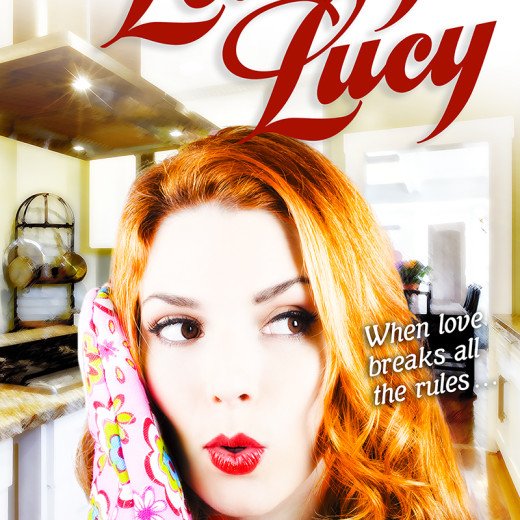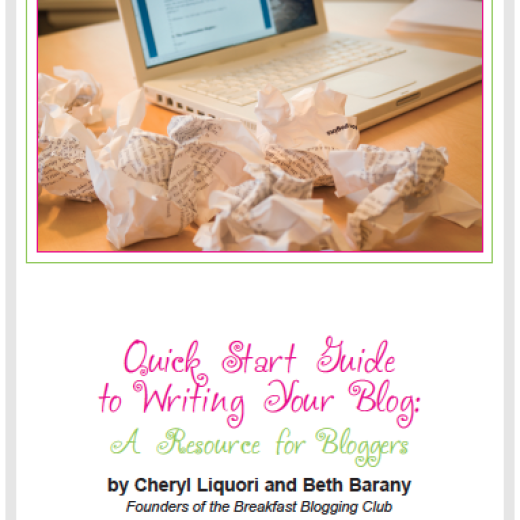What to Expect from Professional Editing by Kristin Noland
 Today we welcome a new guest writer to Writer’s Fun Zone, Kristin Noland who is stopping by to chat with us about “What to Expect from Professional Editing.” Enjoy!
Today we welcome a new guest writer to Writer’s Fun Zone, Kristin Noland who is stopping by to chat with us about “What to Expect from Professional Editing.” Enjoy!
***
You’ve written a novel!
(Congratulations.)
You’ve incorporated your alpha and beta readers’ feedback and revised your novel the best you can. And you know you need to invest in professional editing.
Your chest tightens. Your palms sweat. Your knees are about to bounce you right out of your chair.
Breathe!
Editors are people. We understand your nerves. We get them too.
I’ve gotten shaky and hot as I hover over the “send” button for what seems like minutes.
I wonder if I’ve done too much or not explained enough of my edits.
That I wasn’t clear about something, or the author will be overwhelmed.
My nerves have declined over the years, but I still take a few moments before I hit that button.
But would you be more relaxed if you had a partner with the same goals as you — to make your novel the best it can be?
I’m glad you said yes. For that’s an editor’s goal.
We are here to support and guide you through the editing and revising process, not to bring you down.
So, please relax a bit.
We are well-trained and work with authors in all stages of their careers.
We don’t judge; we advise you on how to elevate your story and storytelling skills so your readers will love your book.
So, what can you expect from a professional editor?
That depends on what level of editing you hire them for.
I’ll break down the editing levels and tell you what to expect from each, so you can decide which level you need and be prepared to receive their feedback.
The levels of editing are:
Developmental editing
Line editing
Copyediting
Proofreading
However, there is one more service I cover here, and that’s the Manuscript Evaluation.
It’s more of a tool than an editing level, but I feel it’s important for you to know all your options.
With all services and editorial levels, you will receive an editorial letter.
My suggestion is to read the letter and let the information in the letter settle in your brain.
Then open the document, if the service selected comes with changes to your manuscript and read through the comments there.
Last, go through your manuscript accepting or rejecting the edits. If there is something larger to solve, make a note to yourself to address it later.
Manuscript Evaluation
Manuscript evaluations, critiques or reviews, as some editors call them, are always optional.
But if you want a detailed evaluation of your manuscript to know its strengths and weaknesses and what would be best for you to concentrate on when you revise, this service is for you.
You will get an editorial letter somewhere between five and ten pages, explaining what is working and what could be improved in your manuscript.
We use specific examples, and our feedback can range from structure to characterization to dialogue and grammar.
Maybe you have a solid plot, deep likable characters, and your messages to your readers are clear, but the pacing is off in some portions and dialogue tags are too plentiful.
You will receive explanations as to why revising would help the reader and suggestions for how to solve these potential issues.
We do not expect you to take all our suggestions, but we hope you value our feedback and that your imagination is sparked to resolve things the way you think is best.
That is the way we want you to handle all our suggestions — your way.
Another use for this service is to find out what editing level you should start with. If you ask your editor, they will let you know their opinion.
Developmental Edit
This edit is more involved than a manuscript evaluation. It’s sometimes called a substantive edit, and it might be the most dreaded edit by most authors.
This is where you may get suggestions for cutting scenes or even entire chapters.
Don’t panic.
The goal is always for you to have the best book you can.
So, take a deep breath and let it out, then read through their suggestions and choose which to take and which to reject.
The developmental editor looks at the big-picture elements of storytelling. Structure, plot, subplots, characterization, character arcs, worldbuilding, pacing, effectiveness of dialogue, and more.
You will receive in-document comments and an editorial letter.
The letter will be similar to the one received with the manuscript evaluation, but it will be more of an overview, as the comments in the document will address specific instances.
Depending on how much you ask your editor to do, they may rearrange or cut things for you.
Again, you have the control to accept or reject the changes.
However, since you asked them to do this, I do recommend reading the manuscript with their changes before looking at what all they changed.
They should send you a clean copy, so this will be easy for you to do.
Receiving your manuscript after a developmental edit can be difficult to handle, especially if they suggest trimming a significant amount or a particular element you love.
Keep in mind, they don’t know what you are strongly attached to, and if they hurt your feelings by cutting something, they didn’t mean to hurt you.
Use your judgement wisely when revising after a developmental edit.
These bigger aspects of storytelling are assessed based on reader expectations and enjoyment.
And since you selected your editor because they specialize in your genre, they know what these expectations are.
Line Edit
Of course, you get your editorial letter, but this time it will be centered on smaller aspects of writing.
Scene structure, paragraph and sentence variation and flow, transitions, and language.
Line edits, sometimes called heavy copy edits, concentrate on these as well as conciseness and clarity of sentences and ideas.
Line editors are looking for repetitive information, phrasing, and words, if an idea is diluted by too much going on around it, and also grammar.
The grammar changes during this edit will consider your stylistic choices and rhythm more than strict grammar rules.
This level of editing can also be a bit scary.
You will most likely see a lot of red as every other sentence or so has been altered in some way and for some good reason. (That’s normal.)
The editor should explain their reasoning for their edits. However, if something is a repeated change, you may not get more than one or two explanations of the same issue, or they may choose to write their explanations in the editorial letter instead.
After you’ve read your letter and the in-document comments, your meticulous review begins.
You will be accepting or rejecting every single edit. You will probably spend a lot of time rewriting sentences or restructuring paragraphs.
Changing dialogue tags to action beats that flow with the dialogue. Adding or removing some setting descriptions. And a lot of other smaller-scale stuff.
Revisions after the line edit will take the longest, so be prepared and take your time.
You will review, think, and revise, and that takes a while.
Be patient with yourself and your editor. It can be frustrating.
Remember when you are going through the edits, your editor doesn’t know you have solved a potential problem; they wrote their comments before you changed a thing.
Copyedit
Grammar, capitalization, and punctuation. Yep, that’s copyediting. It’s probably what you think of when you think about editing.
Copyediting is also the level where sentences are tightened up, stronger verbs selected, and grammar “rules” are strongly considered.
Notice, I said considered, and not enforced.
Good copyeditors will leave grammar rules broken, understanding your stylistic choices and for keeping the rhythm of a sentence.
You will get an editorial letter and in-document edits. You may get a style sheet as well. That should be discussed with your copyeditor before you sign the contract.
A style sheet keeps track of important characters, places, items, and alternate spellings or capitalizations. This helps the editor with keeping things consistent.
You should get two versions of your manuscript, the one with all the editorial suggestions and a clean copy.
You can choose to go edit by edit without looking at the clean copy, or since you will most likely be accepting most of them, you can put them side-by-side and make changes on the clean copy.
Proofread
This last level of editing is done right before publishing.
Proofreading could come before or after the layout is complete. In my opinion, proofreading should be performed twice.
Once before and once after the layout.
You can never be too careful, but make sure you or your proofreader only make simple and necessary corrections after the layout.
Proofreading entails punctuation placement, consistency of spelling and capitalization, chapter and page numbering, hyphenated words — all the little details. You won’t see many edits when you get a proofread back if you’ve hired a copyeditor. Copyeditors return fairly clean copies.
We Covered…
In this article we covered 4 levels of editing:
Developmental editing
Line editing
Copyediting
Proofreading
Plus, the Manuscript Review.
And what to expect from each.
The only other thing I can think of is that no one can or should guarantee a perfect edit.
There will always be some mistakes.
Usually, a missing or extra comma or word.
Something always seems to slip through.
I’m sure you’ve seen this with traditionally published books that have been edited and proofread twenty times.
While editors dig deep into your novel, suggest cutting some things, adding others, switching chapters around or tightening up the prose and correcting punctuation, our overall goal is to lift your novel to the next level.
Please remember it’s the novel we are evaluating, not you.
You put your sweat and tears into your manuscript, but it’s not you as a person, and the editor’s suggestions aren’t telling you what you did wrong, but how something could be improved and why you should consider the revision.
I hope you have found this information helpful and are less intimidated by the process!
If you want a look behind the scenes, check out my Step into the Inner Sanctum series on my blog: https://www.nolandediting.com/blog.
If you have a speculative fiction or crime fiction manuscript ready for a manuscript evaluation or a developmental or line edit, go to my consultation page and schedule a “Quick Chat” with me. We can discuss your novel and how I can help you achieve your publishing dreams! https://www.nolandediting.com/book-online
***
About the Author
 Kristin Noland is a professional editor who works with women authors of speculative and crime fiction. She guides authors through the editing process to strengthen their writing and storytelling skills. With her extensive experience and caring and encouraging editing style, she helps authors publish captivating novels. https://www.nolandediting.com
Kristin Noland is a professional editor who works with women authors of speculative and crime fiction. She guides authors through the editing process to strengthen their writing and storytelling skills. With her extensive experience and caring and encouraging editing style, she helps authors publish captivating novels. https://www.nolandediting.com
You can find her on these socials:
Blog: https://www.nolandediting.com/blog
Threads: https://www.threads.net/@noland_editing
LinkedIn: https://www.linkedin.com/in/kristinnoland
Recommended Reads by Kristin Noland:
The Artful Edit by Susan Bell
Editing Fiction at Sentence Level: A guide for beginner and developing writers by Louise Harnby






